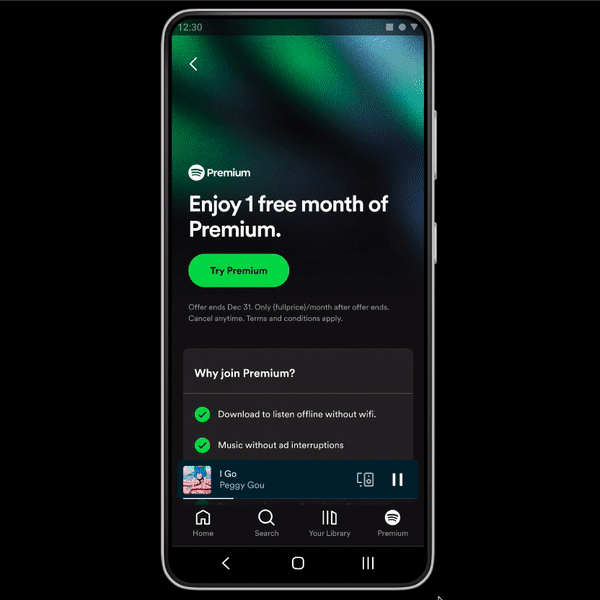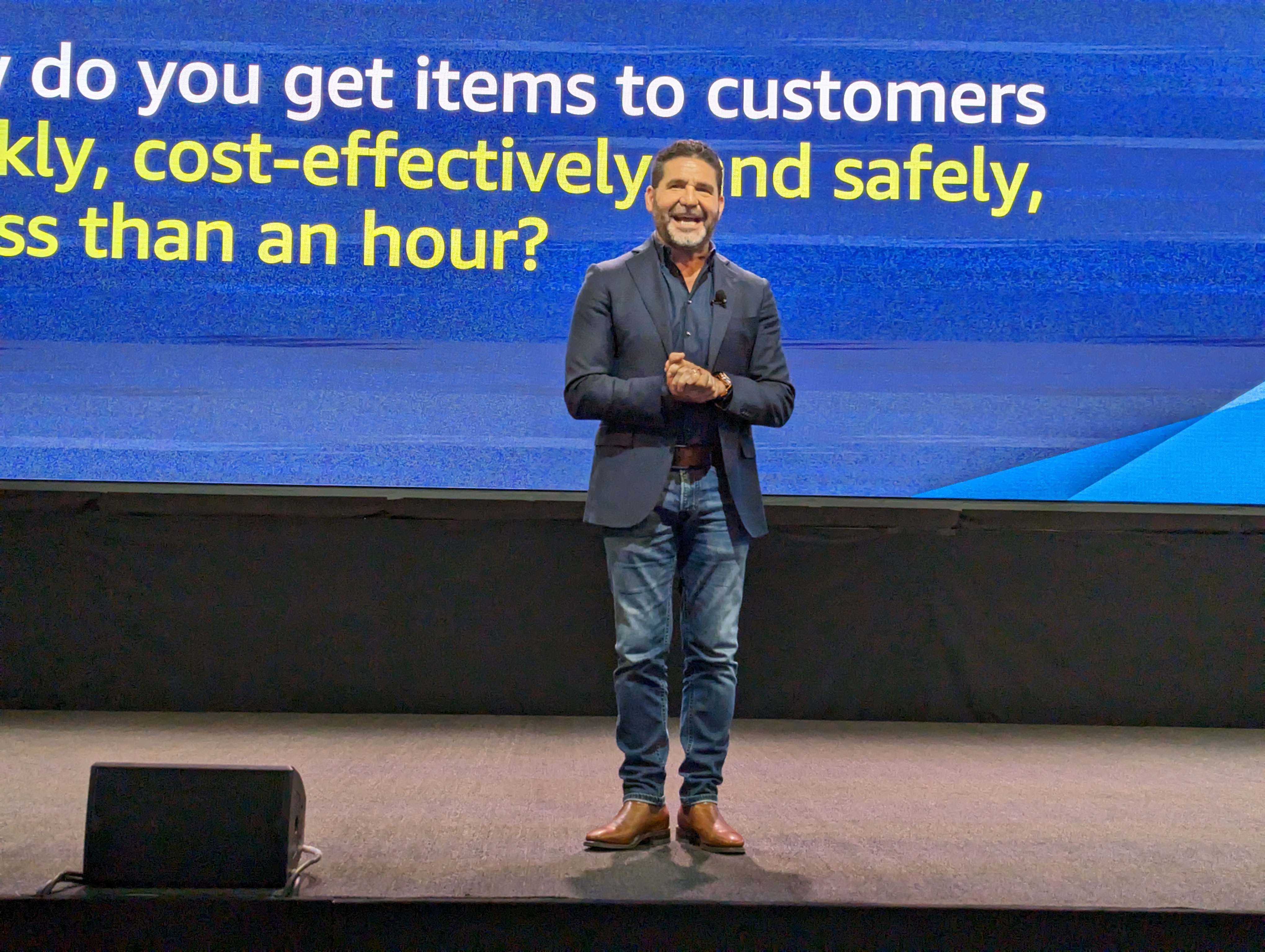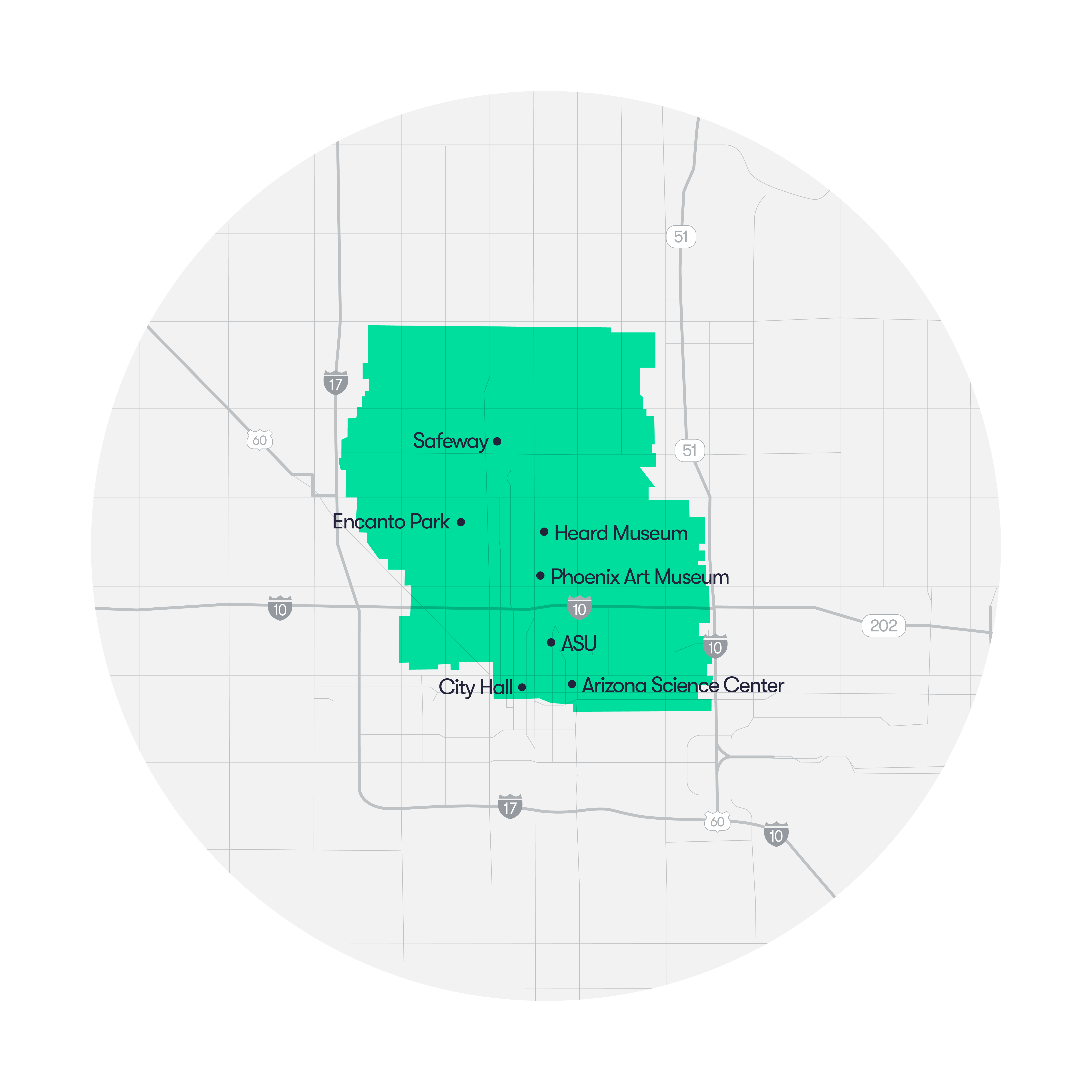Category: TECHNOLOGY
Google Play to pilot third-party billing in new markets, including U.S.; Bumble joins Spotify as early tester
Google today announced it’s expanding its user choice billing pilot, which allows Android app developers to use other payment systems besides Google’s own. The program will now become available to new markets, including the U.S., Brazil and South Africa, and Bumble will now join Spotify as one of the pilot testers. Google additionally announced Spotify will now begin rolling out its implementation of the program starting this week.
The company had first announced its intention to launch a third-party billing option back in March of this year, with Spotify as the initial tester.
Since then, the program has steadily expanded. Last month, for example, Google invited other non-game developers to apply for the user choice billing program in select markets, including India, Australia, Indonesia, Japan and the European Economic Area (EEA). The company also introduced a similar policy for developers in the EEA region in July, but the new guidelines raised the commission discount from 3% to 4% for developers who opted in. With today’s expansion, user choice billing will be made available to 35 countries worldwide.
Google says it’s been working with Spotify to help develop the experience and now the streaming music service will begin to put the new features into action in supported markets. The experience could still change over time, Google warned, as this is still the early days of the pilot test.
In addition, Bumble has now joined Google to test user choice billing in its own app, with plans to roll out the options to users in select countries in the coming months.
Developers interested in adopting user choice billing have to follow certain UX guidelines set by Google that detail how to implement the feature in their apps. These guidelines currently require developers to display an information screen and a separate billing choice screen. The information screen only has to be shown to each user the first time they initiate a purchase, but the billing choice screen must be shown before every purchase, the rules state. There are other requirements around when and how to display the screens and how the user interface should appear.
With the launch, Spotify users on Android will see a new user interface that allows them to choose how they want to pay for their Spotify subscription (see image below.). For the first time, the two options — Google Play billing and Spotify billing — will appear side-by-side. If the user selects Google Play billing, they’ll be transitioned to the usual experience and will be able to track their subscription in the Google Play Store’s Subscription Center. If the user selects Spotify billing, they’ll then continue within Spotify’s own checkout process and user experience.
This test will become available in a few markets at first, then expand to others over the coming weeks, Spotify says.
Image Credits: Spotify
“Spotify has been publicly advocating for platform fairness and expanded payment options for years. We believe that fair and open platforms enable better, frictionless consumer experiences that also empower developers to imagine, innovate, and thrive,” a Spotify blog post stated.
While the general terms offer a 4% reduction in commissions paid to Google when user choice billing is used, Spotify wouldn’t comment on its confidential deal with Google, but notes it meets the company’s standards of fairness. It’s unclear if the streamer has been offered more favorable terms as an early adopter.
These changes follow a period when the major app stores from Apple and Google have been under pressure from lawmakers and regulators in global markets to open up their app ecosystems. This includes pressure to give developers the ability to use third-party payment systems and allow developers to inform customers of other ways to pay, among other things.
In addition, some developers have taken to suing the app giants directly. In the U.S., for instance, Fortnite maker Epic Games sued both Apple and Google for their alleged monopolistic practices due to their restrictions around in-app payments and for the right to distribute apps and games directly to end users outside the official app stores. Dating app giant Match is suing Google as well. (Which makes Google’s choice to invite Bumble into the program that much more interesting!)
Other companies have been lobbying lawmakers for more app store openness, too, through organizations like the Coalition for App Fairness, which includes big-name developers like Epic Games, Spotify, Tile and others, including indie developers.
Google and Apple are also under investigation in various markets, with the Justice Department in the early stages of filing an antitrust suit against Apple and EU antitrust officials investigating the Play Store.
In a blog post, Google says the goal of its pilot is to “understand complexities involved in supporting user choice billing for developers and users in countries across the world while maintaining a safe and positive user experience.” The company has yet to say when it expects the pilot test to wrap.
Google Play to pilot third-party billing in new markets, including U.S.; Bumble joins Spotify as early tester by Sarah Perez originally published on TechCrunch
Amazon Launches Cost-Cuts Review
CEO Andy Jassy is leading the review including the devices unit that encompasses Alexa and which has had an annual operating loss of $5 billion in some recent years, documents show.
OpenAI leads $23.5M round in Mem, an AI-powered note-taking app
Last year, OpenAI announced the OpenAI Startup Fund, a tranche through which it and its partners, including Microsoft, are investing in early-stage AI companies tackling major problems. Mum’s been the word since on which companies have received infusions from the Fund. But today, the OpenAI Startup Fund revealed that it led a $23.5 million investment in Mem, a work-focused app that taps AI to automatically organize notes.
The investment values Mem at $110 million post-money and brings the startup’s total raised to $29 million.
Co-founded by Kevin Moody and Dennis Xu, Mem differentiates itself from traditional note-taking apps by emphasizing “lightweight organization,” in Moody and Xu’s words. The workflow revolves around search and a chronological timeline, allowing users to attach topic tags, tag other users and add recurring reminders to notes.
Mem users can capture quick notes, send links and save images from anywhere using SMS, messaging apps and the platform’s mobile client. Collaboration features let teams share, edit and comment on notes and directly attach them to shared calendars for faster reference.
Mem’s search experience uses AI to search across notes, aiming to understand which notes might be most relevant in a given moment to a particular person. Moody and Xu say the platform is designed to augment knowledge workers in their typical responsibilities, like reading through pages of information, extracting the pieces relevant to a particular question and transforming the information into an answer or a report.
Mem taps AI to organize notes in real time.
There’s no doubt knowledge-seeking tasks are time-consuming. According to Gartner, professionals spend 50% of their working hours searching for information and on average take 18 minutes to locate a file (albeit the veracity of metrics like these has been challenged over the years). One source estimates that document disorganization costs businesses $3,900 per employee each year in productivity losses, making Mem an attractive proposition if the tech works as advertised.
“The number one thing we hear from the organizations we talk to is the desire to be able to marry their vast troves of proprietary knowledge with … generative AI models — to support use cases that range from conducting research to writing to selling and beyond,” Moody and Xu told TechCrunch in an email interview. “The magic of Mem is that we bring together your own private and proprietary data along with state-of-the-art generative language models to unlock truly personalized, factual outputs. We combine knowledge sources across the individual, team and organizational levels, leading to significantly better performance across the board.”
Mem recently launched Mem It for Twitter, which allows users to save threads, get AI-generated summaries of their contents and see suggestions for similar tweets. It’s also continuing to refine Mem X, Mem’s built-in work assistant, with new features like Smart Write and Smart Edit, which leverages AI to generate text based on a prompt, summarize files, generate titles for documents and let users use natural language commands to edit or format text.
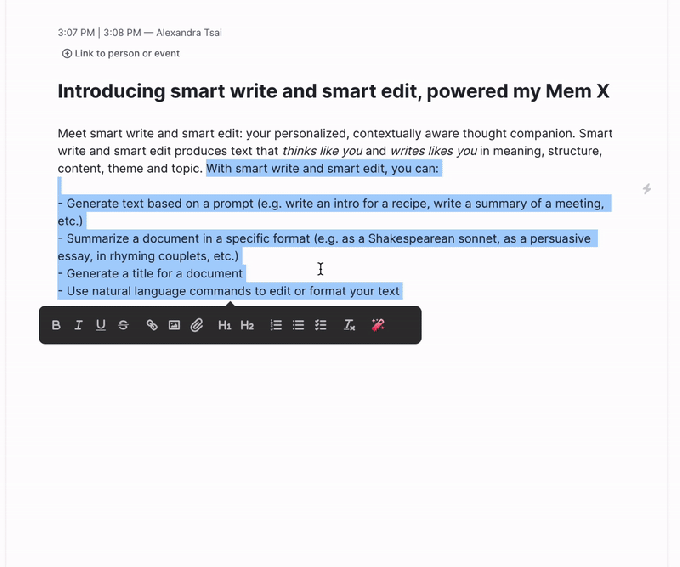
Mem’s AI-powered writing tools, which are launching in preview soon.
The plan for the foreseeable future is to increasingly lean into these sorts of AI-powered experiences, Moody and Xu say, with support from OpenAI through the OpenAI Startup Fund. OpenAI Startup Fund participants receive early access to new OpenAI systems and Azure resources from Microsoft in addition to capital.
“OpenAI is obviously leading the wave of technological revolutions that we are riding,” Moody and Xu said. “This makes the OpenAI Startup Fund the ideal partner for what we’re building — for both the technical expertise and strategic guidance they bring to the table.”
OpenAI COO Brad Lightcap, who also manages the OpenAI Startup Fund, added in an emailed statement: “Mem uses powerful AI to make knowledge workers more productive by removing the tedium and drudgery of organizing and accessing information, ultimately allowing people to focus on the parts of their work that matter. Their vision aligns squarely with our goal at the OpenAI Startup Fund to accelerate companies using AI to enhance productivity and, more broadly, human potential.”
Mem competes with a number of companies seeking to tackle the same knowledge-finding and notes-organizing challenges. In enterprise search, there’s Glean, which recently raised $100 million in a venture equity round. On the knowledge management side, Atlassian’s wiki-like collaborative workspace Confluence and Notion, which was valued at $2 billion in 2020, still dominate.
But Moody and Xu argue that 16-employee Mem has an advantage in that it’s “self-organizing,” ostensibly resulting in less manual curation and labor. While they declined to reveal Mem’s revenue or the names of any major customers, they assert that Mem is successful, owing to its AI-driven tech.
“We’re confident in our unique approach to self-organizing and generative knowledge management. … Our personalized machine learning models not only help knowledge workers stay organized automatically, but also go beyond simply helping find things — we actually help people do their work,” Moody and Xu said. “The shift to remote work has made effective, asynchronous knowledge sharing more important than ever, and the market slowdown has caused companies to focus on efficiency. Our AI-assisted knowledge work saves people time, and the rapid improvement in large language models gives us a further tailwind.”
OpenAI leads $23.5M round in Mem, an AI-powered note-taking app by Kyle Wiggers originally published on TechCrunch
https://techcrunch.com/2022/11/10/ai-powered-note-taking-app-mem-raises-23-5m-openai/
Amazon previews its new delivery drone, the MK30
Following this morning’s debut of the Sparrow bin picking robot, Amazon just unveiled MK30, the latest iteration of its delivery drone. The system is the successor to the MK27-2, which is set to debut limited deliveries to residents in Lockeford, California and College Station, Texas.
The MK30, which is set for a 2024 debut, is both smaller and lighter than the earlier version and able to withstand harsher temperatures and a broader range of weather conditions. Another key element here is making things quieter. Drone noise has been one of the most anticipated complaints about bringing these systems into residential settings.
The system maintains the same basic hexacopter foundation as its predecessor — a different tact that the fixed wing systems deployed by the likes of Wing.
Image Credits: Brian Heater
Amazon writes,
Reducing the noise signature of our drones is an important engineering challenge our team is working on. Our drones fly hundreds of feet in the air, well above people and structures. Even when they descend to deliver packages, our drones are generally quieter than a range of sounds you would commonly hear in a typical neighborhood. Prime Air’s Flight Science team has created new custom-designed propellers that will reduce the MK30’s perceived noise by a further 25%. That’s a game-changer we’re very excited about.
Also on-board are new safety systems designed to avoid a wide range of different obstacles, from fellow drones to trees to people and pets. “While it’s impossible to eliminate all risks from flying, we take a proven aerospace approach to design safety into our system,” the company writes. “As always, our newest drone will go through rigorous evaluation by national aerospace authorities like the Federal Aviation Administration to prove its safety and reliability.”
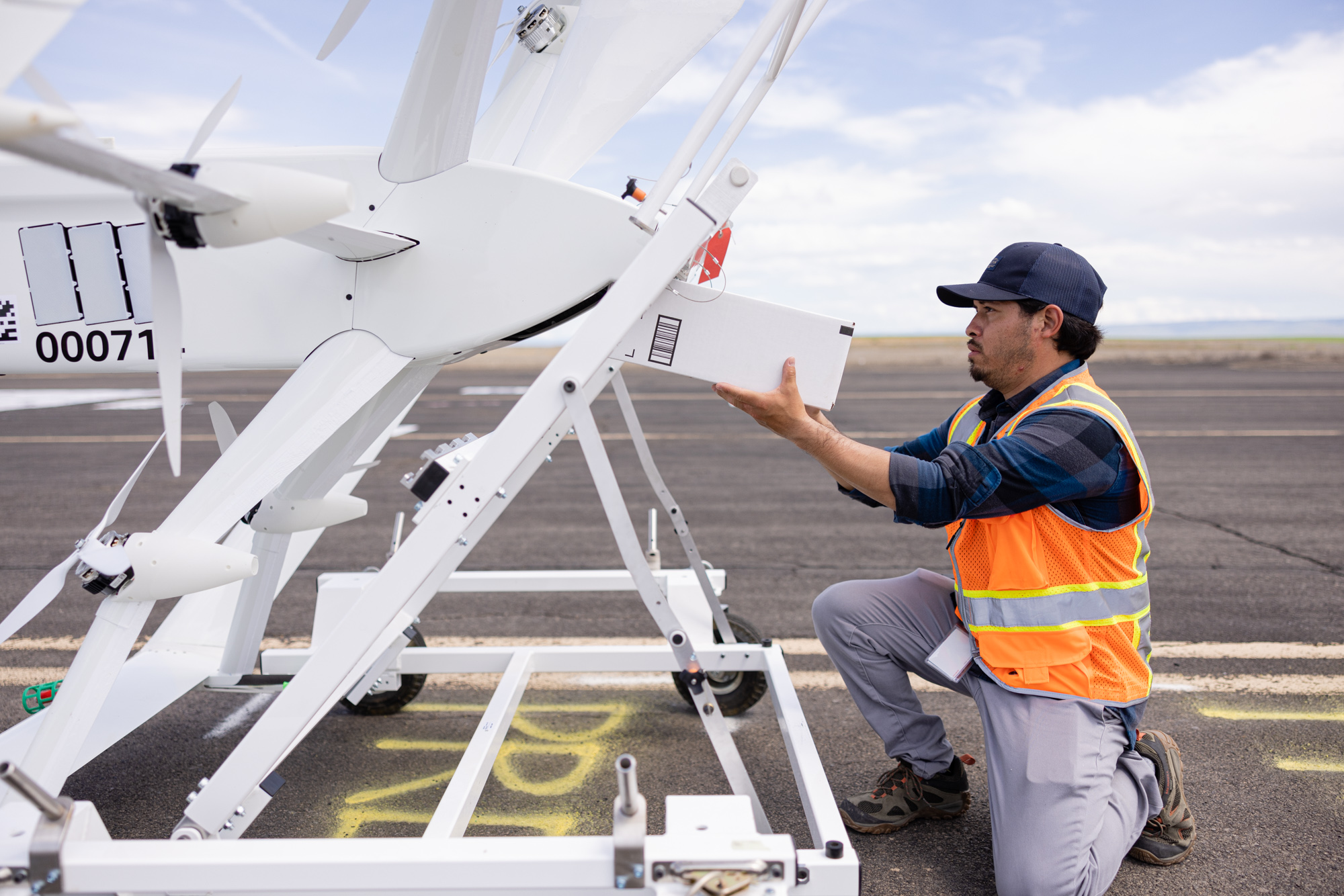
Pictured: Amazon’s previous model
The acknowledgement of risk is important here. The truth is as these things become more common, so too, will accident reports. Amazon’s delivery drones have been through their share of ups and downs (so to speak), but the program appears to have survived some wide ranging cuts from CEO Andy Jassy – the same may not apply to the company’s latest mile Scout delivery robot, however.

Amazon: A drone being tested in a wind tunnel
“[T]o sustainably deliver a vast selection of items in under an hour, and eventually within 30 minutes, at scale,” Amazon writes, “drones are the most effective path to success.”
Plenty of skepticism remains around the efficacy so such programs, of course. Amazon, however, isn’t alone in better big on drone deliver — one baby step at a time. Alphabet’s Wing program recently announced a deal with Door Dash for food deliveries in Logan, Australia.
Amazon Prime Air VP David Carbon discussed the company’s ambitions thusly at today’s event,
A demonstrated, targeted level of safety that is validated by regulators and a magnitude safer than driving to the store. Delivering 500 million packages by drone, annual by the end of this decade. Servicing millions of customers, operating in highly populated, suburban areas such as Seattle, Boston and Atlanta. Flying in an uncontrolled space autonomously.
Amazon previews its new delivery drone, the MK30 by Brian Heater originally published on TechCrunch
https://techcrunch.com/2022/11/10/this-is-amazons-new-delivery-drone-the-mk30/
Now anyone can hail a Waymo robotaxi in downtown Phoenix
Waymo has opened up its fully driverless ride-hail service in downtown Phoenix to members of the general public. Previously, the company had only been operating a commercial service with no safety driver behind the wheel for participants in its “trusted tester” program.
The expansion in Phoenix is yet another sign of Waymo’s accelerated push towards commercialization. It comes a day after Waymo secured its driverless deployment permit from the California Department of Motor Vehicles, which allows Waymo to charge for autonomous services, like delivery, in San Francisco. More importantly, it’s a prerequisite to securing the California Public Utilities Commission’s own driverless deployment permit, which Waymo needs to operate a commercial robotaxi service with no human safety operator in the city.
Waymo’s service in downtown Phoenix will mirror the one it has operated in Chandler, Arizona since 2020. It will be a paid rider-only service that’s available 24/7 to anyone who downloads the app and hails a ride Waymo’s service area. Waymo said this is an important step as it plans to expand the service to even more of the downtown area in coming months.
Earlier this month, Waymo also launched rides, with a driver in the front seat, to Phoenix’s airport from the city’s downtown. The service is currently only available to trusted testers, but will likely expand using the same recipe Waymo has used throughout its many expansions — Waymo will probably next test fully driverless rides to the airport with employees before opening that up to trusted testers, and then finally to members of the public. Waymo did not confirm or deny this roadmap.
Waymo’s service area in downtown Phoenix. Image Credits: Waymo
Waymo did not say how many of its fleet of Jaguar I-Pace’s would be dedicated to the commercial ramp in Phoenix, but a spokesperson told TechCrunch the company is ready to meet what it projects to be a “healthy demand” for a 24/7 autonomous ride-hailing service downtown.
Now anyone can hail a Waymo robotaxi in downtown Phoenix by Rebecca Bellan originally published on TechCrunch
https://techcrunch.com/2022/11/10/now-anyone-can-hail-a-waymo-robotaxi-in-downtown-phoenix/
Police arrest suspected LockBit operator as the ransomware gang spills new data
A dual Russian and Canadian national linked to the LockBit ransomware operation has been arrested over his alleged involvement in attacks targeting critical infrastructure and large industrial groups worldwide.
Mikhail Vasiliev, 33, was arrested in Ontario, Canada on October 26 following an investigation led by the French National Gendarmerie with the help of Europol’s European Cybercrime Centre, the FBI, and the Canadian Royal Canadian Mounted Police. During the arrest, police seized eight computers, 32 external hard drives, and €400,000 in cryptocurrencies, Europol said.
The arrest follows a similar action in Ukraine in October last year when a joint international law enforcement operation led to the arrest of two of his accomplices.
Europol says Vasiliev, described as “one of the world’s most prolific ransomware operators,” was one of its high-value targets due to his involvement in numerous high-profile ransomware cases. The EU police agency added that he is known for trying to extort victims with ransom demands between €5 to €70 million.
A separate press release from the Department of Justice notes that LockBit has claimed at least 1,000 victims in the United States and has extracted tens of millions of dollars in actual ransom payments from their victims.
Vasiliev is awaiting extradition to the United States, where is charged with conspiracy to intentionally damage protected computers and to transmit ransom demands. If convicted, he faces a maximum of five years in prison.
“Yesterday’s successful arrest demonstrates our ability to maintain and apply relentless pressure against our adversaries,” said FBI Deputy Director Paul Abbate. “The FBI’s persistent investigative efforts, in close collaboration with our federal and international partners, illustrates our commitment to using all of our resources to ensure we protect the American public from these global cyber threat actors.”
Brett Callow, a ransomware expert and threat analyst at Emisosft, tells TechCrunch that Vasiliev’s arrest could signal the end of the LockBit operation “as other cybercriminals will lose confidence in the integrity of the operation.
“Unfortunately, the group will probably rebrand, but this is nonetheless a significant arrest,” Callow added. “Vasiliev could well lead law enforcement to others involved in the operation.”
Specific victims targeted by the suspected LockBit operator were not named by Europol. However, France’s involvement in the operation suggests Vasiliev could be linked to a recent attack on French aerospace and defense group Thales.
LockBit, a prominent ransomware operation that’s previously claimed attacks on tech manufacturer Foxconn, U.K. health service vendor Advanced, and IT giant Accenture, added Thales to its leak site on October 31. The group claimed to have published data stolen from the company today, which it describes as “very sensitive” and “high risk” in nature. Contents of the data leak include commercial documents, accounting files and customer files, according to LockBit, though the files had not been published at the time of publication.
“As far as customers are concerned, you can approach the relevant organizations to consider taking legal action against this company that has greatly neglected the rules of confidentiality,” a message on the LockBit leak site reads.
Thales spokesperson Cedric Leurquin did not immediately respond to our request for comment.
LockBit also claims to have today leaked 40 terabytes of data stolen from German automotive giant Continental, and samples of the data suggest that the gang has accessed technical documents and source code. Though a ransom demand was not explicitly stated, the ransomware gang’s leak page claims to offer access to the full tranche of stolen data for $50 million.
Continental spokesperson Marc Siedler told TechCrunch that the company’s investigation into the incident has revealed that “attackers were also able to steal some data from the affected IT systems,” but refused to say what types of data were stolen or how many customers and employees have been affected.
Police arrest suspected LockBit operator as the ransomware gang spills new data by Carly Page originally published on TechCrunch
Meet Pineapple, the platform aiming to reshape professional networking for Gen Z
Diamond says the main focus of Pineapple is user profiles, which are designed to help create deep and meaningful professional connections by allowing users to express themselves in a visual way. The app’s profiles are a cross between LinkedIn and Instagram, as they showcase a user’s introduction, experience, projects and more in a visual Story-like way.
Another big part of Pineapple is Communities, which aim to help users find other people who are passionate about the the same thing as them. From VCs to marketers to designers, there are specific communities for all sorts of topics. You can see the member directory for each community and connect with specific people. Within Communities, there are Jams, which are threaded conversations for discussions that last for 24 hours. Jams can be used to go in-depth about a specific topic. For instance, a founder can start a Jam to answer questions that people may have about their journey.
Pineapple also includes an Explore page where you can discover more Jams, people and communities. The app also has a TikTok-inspired For You page that is designed to help you keep up with your connections.
Some may see Pineapple as the “LinkedIn for Gen Z,” but Diamond says the platform still has a ways to go before looking to take on LinkedIn. Right now, Pineapple is focused on helping people network in different ways than LinkedIn is. For instance, Diamond says that some young users may use LinkedIn to find a mentor, but Pineapple is where they can come to network with their peers, learn new things and find people for their side projects. Pineapple also isn’t focused on status/job updates or the hustle culture that is often associated with LinkedIn, Diamond says.

Image Credits: Pineapple
For the time being, Pineapple is going to focus on growth before venturing into monetization. When Pineapple is ready to add monetization features to its platform, Diamond says the company will focus on helping creators earn money. One of the ways the company plans to due this is through creator subscriptions where popular creators will be able to offer educational content to users for a price. In addition, Pineapple hopes to partner with companies who will be able to recruit employees directly from the platform.
“We want to be the go-to professional network for Gen Z and folks who are early on in their career,” Diamond says. “From a roadmap standpoint, we want Pineapple to be the obvious solution for people who are starting their career. I think in order to do that, we need to up our game when it comes to profile-building. I think you should be able to build a mini-website within Pineapple, and I don’t think there should be a need to ever have a portfolio website if you have Pineapple.”
In terms of funding, Pineapple raised a $1.1 million pre-seed round in April that was co-led by F7 Ventures and 500 Global. The round included participation from angel investors Bradley Horowitz, the VP of product at Google, and Julie Zhou, the former VP of design at Facebook. Diamond says the funding mainly went toward research and development, along with making key early hires.
Pineapple is kicking off its seed round soon and plans to close it sometime next year.
Pineapple, an app that’s aiming to reshape professional networking for Gen Z, is officially launching to the public today. The idea behind Pineapple is to give young professionals a way to network with others through a visual story profile that’s kind of like a digital portfolio. For now, the platform is only available on iOS.
The professional network is the brainchild of Pineapple’s 22-year-old co-founder and CEO David Diamond, who got an early start in tech as a product design intern at Intercom at age 15. Diamond was initially rejected from Intercom after applying with a standard paper resume and was also told he was too young to work there. After strengthening his resume and building a portfolio, Diamond says he landed the role.
“I started to think about how I landed the job and how lucky I was,” Diamond told TechCrunch in an interview. “I wondered, if I had to put together a portfolio, what was the rest of my generation doing? From there, we had a clear vision of building a professional network for Gen Z. We saw that other networks weren’t accurately representing Gen Z. We wanted to make a network that helps Gen Z network with each other and gain opportunities, rather than focusing on creating another jobs board. The goal was to give users profiles that really represent them.”
In 2020, Diamond founded Pineapple alongside Oliver Cruise with the goal of changing professional networking for Gen Z. After beta testing the platform with 10,000 users, Pineapple is now ready to grow.
Image Credits: Pineapple
Diamond says the main focus of Pineapple is user profiles, which are designed to help create deep and meaningful professional connections by allowing users to express themselves in a visual way. The app’s profiles are a cross between LinkedIn and Instagram, as they showcase a user’s introduction, experience, projects and more in a visual Story-like way.
Another big part of Pineapple is Communities, which aim to help users find other people who are passionate about the the same thing as them. From VCs to marketers to designers, there are specific communities for all sorts of topics. You can see the member directory for each community and connect with specific people. Within Communities, there are Jams, which are threaded conversations for discussions that last for 24 hours. Jams can be used to go in-depth about a specific topic. For instance, a founder can start a Jam to answer questions that people may have about their journey.
Pineapple also includes an Explore page where you can discover more Jams, people and communities. The app also has a TikTok-inspired For You page that is designed to help you keep up with your connections.
Some may see Pineapple as the “LinkedIn for Gen Z,” but Diamond says the platform still has a ways to go before looking to take on LinkedIn. Right now, Pineapple is focused on helping people network in different ways than LinkedIn is. For instance, Diamond says that some young users may use LinkedIn to find a mentor, but Pineapple is where they can come to network with their peers, learn new things and find people for their side projects. Pineapple also isn’t focused on status/job updates or the hustle culture that is often associated with LinkedIn, Diamond says.

Image Credits: Pineapple
For the time being, Pineapple is going to focus on growth before venturing into monetization. When Pineapple is ready to add monetization features to its platform, Diamond says the company will focus on helping creators earn money. One of the ways the company plans to due this is through creator subscriptions where popular creators will be able to offer educational content to users for a price. In addition, Pineapple hopes to partner with companies who will be able to recruit employees directly from the platform.
“We want to be the go-to professional network for Gen Z and folks who are early on in their career,” Diamond says. “From a roadmap standpoint, we want Pineapple to be the obvious solution for people who are starting their career. I think in order to do that, we need to up our game when it comes to profile-building. I think you should be able to build a mini-website within Pineapple, and I don’t think there should be a need to ever have a portfolio website if you have Pineapple.”
In terms of funding, Pineapple raised a $1.1 million pre-seed round in April that was co-led by F7 Ventures and 500 Global. The round included participation from angel investors Bradley Horowitz, the VP of product at Google, and Julie Zhou, the former VP of design at Facebook. Diamond says the funding mainly went toward research and development, along with making key early hires.
Pineapple is kicking off its seed round soon and plans to close it sometime next year.
Meet Pineapple, the platform aiming to reshape professional networking for Gen Z by Aisha Malik originally published on TechCrunch
https://techcrunch.com/2022/11/10/pineapple-platform-reshape-professional-networking-gen-z/
Dispatches from the conference room
Greetings on a brisk New England morning. I’m finally here on my long threatened trip to Boston. I was planning to be here in early July ahead of our robotics event, but SARS-CoV-2 and its many variants had different ideas. I narrowly avoided another reschedule on my third time around with COVID, but now I’m in that brief (and ever narrowing) window of relative immunity. It’s like I’m Superman or something (probably shouldn’t have gone with one of the few DC superheroes without a mask).
Given the fact that I haven’t been out since 2019, I may well have overbooked. Met with four startups yesterday afternoon after arriving at Logan, spent this morning meeting with a couple of VCs/accelerators and startups, and am currently writing to you from a MassRobotics conference room (shoutout to Joyce, who kindly reserved me a conference room to chat with some founders ahead of a panel and more meetings tonight).
An aerial general view during a game between the Boston Red Sox and the New York Yankees on August 13, 2022 at Fenway Park in Boston, Massachusetts. Image Credits:Billie Weiss/Boston Red Sox/Getty Images
Call it a fact-finding mission. Or maybe a temperature check. We’ve entered an interesting moment, where superpowered robotic VC investments are finally having to contend with the realities of market forces. For a moment there, the industry appeared relatively immune to the slowdown, but in spite of continued bullish feelings about automation at large, nothing here can appropriately be labeled “recession proof.”
Anecdotally, we may have also entered the stage in which the key players in already well-represented categories such as logistics/fulfillment are already in place. That isn’t to say there isn’t room for key new players to enter the picture, but I suspect it’s a lot harder to get tens of millions in funding by telling investors that you’re an Amazon Robotics killer than it was at the beginning of the pandemic.
At the moment, I’ve got a keen eye out for two things:
First, the companies solving the extremely unsexy problems. There are still a lot of extremely bad — and impossible-to-staff — jobs out there that are ripe for automation. I spoke with a company that’s a great representation of that phenomenon, which I’ll dive into when I debrief my Boston trip in next week’s Actuator.
Second, the key components of the broader robotics experience. I know a lot of well-funded companies are looking to create their full-stack solutions, but as these technologies grow in application, a ton of smaller industries are going to sprout up around that. If you’ve got a sufficiently adaptable piece of that puzzle, you’ve got a great — and perhaps overlooked — business on your hands.
There’s value in well-placed myopia. Sometimes thinking small is the right business move. I realize and respect that a lot of folks enter the space with plans to change the world, but they think globally and act locally and all of that good stuff.
Roughly 24 hours into this trip, and I’m realizing how much I missed landing in a place and talking to as many startups as possible. Glad I’m able to do this in Boston again, and hoping to be in more cities soon to see what companies are cooking and, perhaps, check the temperature of the industry from a much closer vantage point. Again, lots more on all of the above next week.
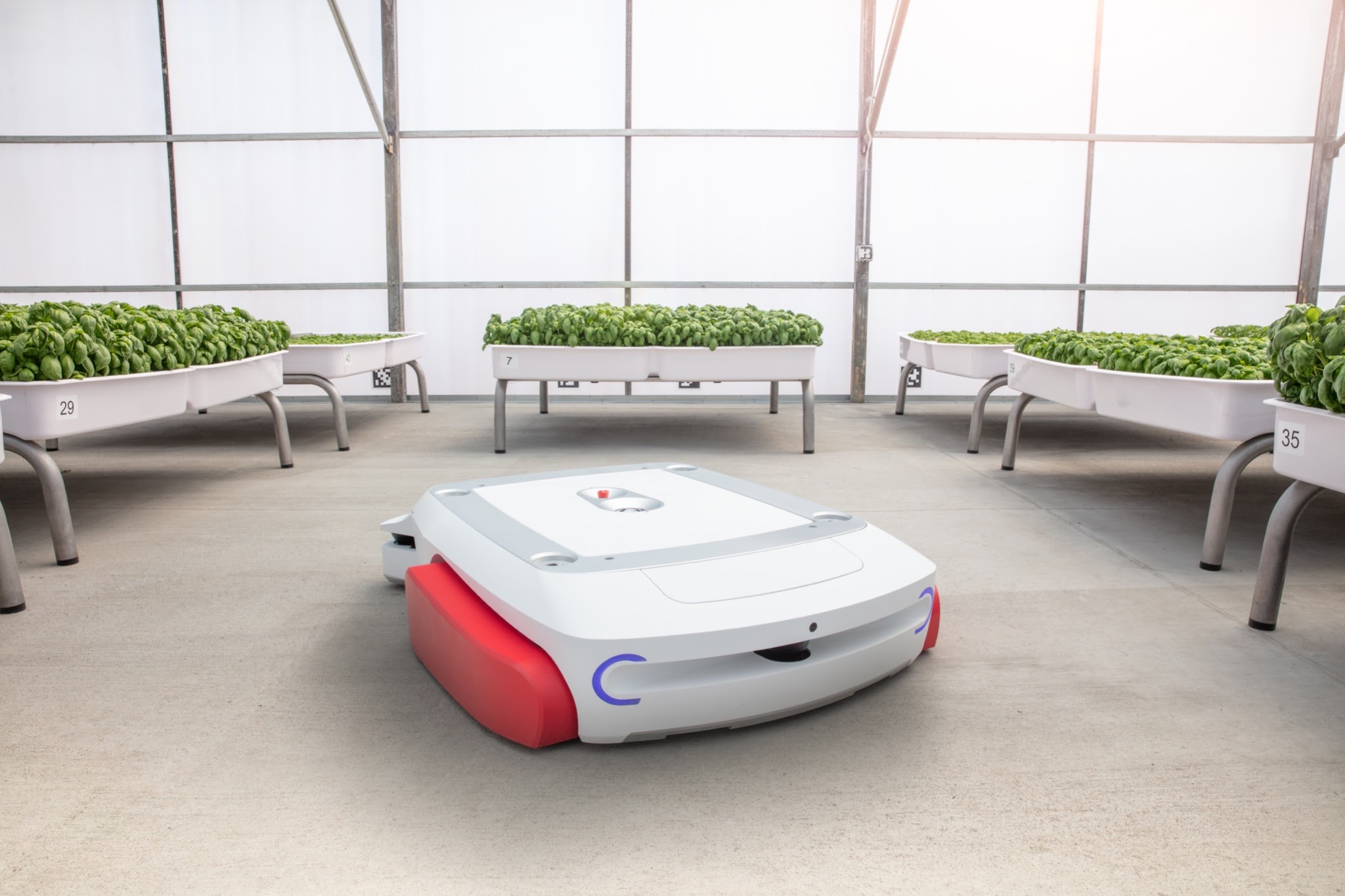
Image Credits: Iron OX
For now, two things are top of mind on this newsletter. One is fun. The other less so. We’ll start with the bad news first. Layoffs. Almost overnight, half the staff at Iron Ox is out of work. Even forgetting the extremely real and immediate human impact of such a move, it’s very disheartening for the industry. There are a lot of questions here. Is this a broader indictment of fully automated greenhouses? Is it something specific to Iron Ox? Perhaps the company’s solution was more proprietary and less adaptable to existing systems than a startup needs to be in the space.
Either way, it’s hard not to walk away from this with the sense that such a well-funded firm is something of a bellwether for automation’s hard road ahead, as the space grapples with bigger macroeconomic issues.
Chief legal officer Myra Pasek confirmed the layoffs this week with TechCrunch. All told, they amount to just under half of Iron Ox’s staff, and appear to run across the organization. It’s a gutting of a company that is clearly doing some soul searching around which existing elements to capitalize on going forward. Says Pasek:
We’ve decided to hyperfocus on our core competence of engineering and technology; as a result, we eliminated many roles that are not core to our renewed focus. However, the layoff was comprehensive and included positions throughout the organization — i.e., not limited to only certain departments.
Reducing the Iron Ox team was a painful decision — one we did not take lightly. We are working with our board members and leaning into our extensive ecosystem throughout Silicon Valley to help employees find meaningful new work at mission-aligned companies. Iron Ox has always hired world-class talent, and I’m confident that the individuals we unfortunately had to cut this week will have many options open to them. As a matter of policy, we are not going to provide additional details or comment on specific personnel, and we ask that you respect their privacy at this sensitive time.
This was precisely the caveat I was alluding to in last week’s newsletter when talking about climate robotics firms. Not everything is a surefire bet, but that shouldn’t distract founders from the fact that there’s a lot of good to be done and money to be made in this space.
Image Credits: NimbRo
The more pleasant news this week is around teleoperation. Our TC Sessions: Robotics pitch-off winner Touchlab made it to the semifinals, but ultimately, the XPrize Avatar trophy went to NimbRo, which hails from the Autonomous Intelligent Systems group at the University of Bonn, Germany. The company won the $5 million prize at the finals competition in Long Beach, California.
“NimbRo’s work demonstrates the remarkable potential of avatar technology to transcend time and distance and help address urgent human challenges, from health care access to disaster relief,” Xprize CEO Anousheh Ansari said in a release. “The final testing event was an exciting opportunity to share the power of telepresence with thousands of people in-person and around the world. We are grateful to all the participating teams for their impressive work and their efforts to boldly push technological boundaries.”
NimbRo beat out 98 other teams, completing the 10 teleoperation tasks in five minutes, 50 seconds. The second-place team Pollen Robotics took ten minutes, 50 seconds, and the third-place team from Northeastern did so in 21 minutes, nine seconds. Here’s a breakdown of the event’s numerous stages, straight from NimbRo.
If I wasn’t on the road this like, I likely would have contributed a significant portion of this week’s newsletter to the topic of telepresence. Namely, it seems like the automotive market dominated the conversation and caused many folks in the space to skip directly to full automation. But there’s some important middle ground here to explore. Remote operation makes a lot of sense in a lot of contexts, especially as many are recognizing precisely how difficult a problem full automation truly is.

Ouster demo vehicle Image Credits: Ouster
Earlier this week, two major lidar companies agreed to become one. Both Ouster and Velodyne signed a deal on November 4 that finds the two firms maintaining 50% of the stock in the newly formed company. The key factors at play here, as Rebecca points out in her article, are (1) there are a lot of companies in the lidar space — A LOT, a lot — and (2) things are returning to Earth after the big SPAC land grab. Ouster co-founder and CEO Angus Pacala will become the CEO of the combined firms, while Velodyne CEO Ted Tewksbury will serve as executive chairman of the board.

Image Credits: Wing
Meanwhile, drone delivery service Wing continues to expand its Australian operations. The Alphabet-owned firm struck a deal with DoorDash that will provide drone delivery of convenience and grocery items in 15 minutes or less through the popular app.
“While Wing has traditionally provided delivery services directly to residential and business customers, to further accelerate our technology development, we’ll be increasingly working with marketplaces and logistics partners to expand their delivery options,” says Wing Australia GM Simon Ross. “[We’re focused on] making fast drone delivery affordable and sustainable for them and their customers.”

Image Credits: Bryce Durbin/TechCrunch
Read next week’s dispatches next week by subscribing to Actuator.
Dispatches from the conference room by Brian Heater originally published on TechCrunch
https://techcrunch.com/2022/11/10/dispatches-from-the-conference-room/
Okta CEO opens up about Auth0 acquisition, SaaS slump and Lapsus$ attack
Okta launched a cloud identity product back in 2009 when most people were locked into Microsoft Active Directory, an on-prem incumbent so entrenched that nobody believed that anyone could touch it. It took a little audacity to go after a giant like that, but Okta took a cloud-first approach, a markedly different strategy from Active Directory at the time.
The company raised over $230 million before going public in 2017. It reached unicorn status with a $75 million raise on a $1.2 billion valuation back in 2015 when the designation meant a little more than it does these days.
With ownership of the workforce side of the market, Okta decided to make another bold move when it acquired Auth0 for $6.5 billion during the stock market bubble that accelerated in 2020. The idea behind the deal was not simply to own an identity tool favored by developers — although that was certainly a big part of it — it was really about owning another large piece of the market, one that could make Okta a one-stop identity shop.
“There’s a very deep divide between legacy and modern in this market.” Okta CEO Todd McKinnon
Okta wanted to own both the workforce market, the core of its approach to that point, as well as the customer identity market where Auth0 lived. And Okta made a substantial bet for a company of its size to make that happen.
Okta isn’t alone in the identity space; competitors include companies large and small like ForgeRock, SAP, IBM, Ping Identity, Salesforce, Microsoft and Akamai, among others.
Like every other SaaS company out there, Okta has had a rough year in the public markets, down over 80% in the past year (although it was up almost 10% in midday trading Thursday). It also had to deal with an attack spearheaded by the group Lapsus$ that happened in January but was reported in March — and the fallout from its response.
Despite these headwinds, the company has big long-term goals to own the cloud identity market and believes it can ride out the current temporary macroeconomic conditions and the legacy vendors to get there.
We sat down with CEO and co-founder Todd McKinnon recently and asked him about how he is navigating these times — and the lessons he’s learned along the way.
Growing Auth0
McKinnon emphasized that he spent 14% of his stock value at the time to acquire Auth0, a number he knows off the top of his head, because he wants his company to own the cloud identity market, and he doesn’t think he could do it without Auth0.
“We bought them to change, and we bought them because we needed change to win this customer identity market,” he told TechCrunch. “Our strategy is that we have to win both the workforce market and the customer identity market. And the only way we’re going to turn identity into one of these most important platforms for every company is we have to [own] both use cases.”
He said integrating two companies like this didn’t come without challenges, and he may have moved too quickly to bring the products together.
Okta CEO opens up about Auth0 acquisition, SaaS slump and Lapsus$ attack by Ron Miller originally published on TechCrunch
New Technology Lets Farmers Use Land for Both Solar Panels and Crops
By using elevated panels, researchers hope they can generate electricity without reducing yields on the crops growing underneath.
https://www.wsj.com/articles/solar-panels-farmers-crops-11668018216?mod=rss_Technology
